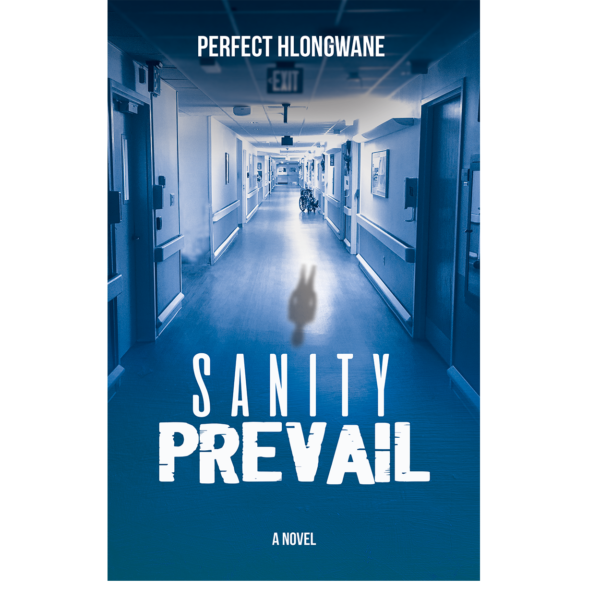
Kukud’ eBhofolo: Reviewing Perfect Hlongwane’s Sanity Prevail
Madness is often associated with the extent that an observed behaviour deviates from what is expected. This difference may also extend to distance – how far away observations are from expectations. In the realm of those classified as “sans sense”, this distance has physical manifestations. We cast away those who display actions counterpoint to normative behaviours. Often (and definitely historically), the care facilities for such individuals are placed geographically far from what is termed “civilisation”. In the Eastern Cape (EC) province of South Africa, there is a Xhosa saying that references this – “kukude eBhofolo indawo yamageza” (directly translated as “Fort Beaufort, the place for crazies, is far”). One of the older mental health institutions in the country is located in the town of Fort Beaufort also known as eBhofolo in EC vernacular. This facility was so far from major towns and villages back in the day that a caution to those playing the fool (to purposefully select a bad phrase) was “kukude eBhofolo indawo yamageza”. A refrain to the addressee to either correct course or know that the trip to eBhofolo is likely one way, with minimal visitations on account of the significant distance.
A closer calculation of the difference between sanity and insanity however may reveal a shorter distance than imagined. In the current world of antivaxxers (the majority of whom reckon their individual rights trump the wellbeing of the society) we sit with enough counterintuitive behaviours within normative culture that makes us question who, in fact, are the crazy ones. We often observe so much doublespeak, inconsistencies and contradictions in our societies that the distance between sanity and insanity is akin to the clock positions of five minutes before twelve and five minutes after twelve. So far apart that they are right next to each other somehow.
In a lot of ways, Hlongwane’s 2021 book is reminiscent of Ken Kesey’s 1962 cult classic One Flew Over the Cuckoo’s Nest, which was largely about the irony of a facility meant to rehabilitate mental illnesses turning an arguably sane man mad. While worlds apart in every aspect from Kesey’s ward, Sanity Prevail retains that genetic strand of the phrase “the more things change the more they stay the same”. Hlongwane’s novel depicts the happenings, over a few weeks, at a mental health facility in Johannesburg, South Africa. Hlongwane uses the same resource of a voyeuristic first-person narrator interned at a psychiatric ward, but places this protagonist and the other characters in twenty first century South Africa, with its unique systemic issues. The theme of the book is summarised succinctly by Hlongwane’s protagonist – “going mad is possibly the sanest reaction to life on this planet” (p. 68).
Hlongwane’s book is an exercise in playing with expectation gaps – the core element of insanity. This is in both content and form. The reader and the characters grapple with how things play out contrary to what they may have expected. As an example, where a reader may expect a contemporary rendering of mental illness to be in a somewhat muted, woke-culture-compliant (read: politically correct) fashion (with less of the overt racism and electrocutions and lobotomies of the Kesey book) Hlongwane subverts that expectation. He doesn’t avoid reflecting the realities of extreme mental unwellness in the patients. The characters depicted exhibit symptoms and behaviours with the shock value that would be traditionally expected of individuals admitted into mental care facilities. Zena, the first character to whom we are introduced in the book, kicks us off with a scene in which she sees a Zulu speaking androgenous leprechaun who gives her a diamond. She’s convinced, initially, that she’s losing her mind but she pockets the diamond and goes on about the business of living, heading to a job in which she has little interest. At tea-time, she goes to the park to have a good laugh at herself for the hallucination she experienced during her morning routine. Returning to the office however, she is accosted by hallucinations, this time of giants, that send her screaming to the psychiatric ward. She lays low for a bit at the institution, until something snaps once again and she’s seen vacillating between prophetic pastoral proclamations and public masturbation
The patient Mthunzi comes into the psychiatric ward with not a single tooth to his name. In a gummy laugh that irritates the protagonist, he relays how, having been chased away from his uncle’s village home in Eshowe in Kwazulu Natal province South Africa, he is given a safety net by the uncle’s widow who offers him boarding at the relative’s four roomed house in the township of Alexandra in Johannesburg. Unfortunately, that turns out to be all that’s offered. The village boy is abandoned for ten days, left with no food supplies in a big city in which he knows no one or any thing about surviving and fending for himself. The starvation puts him in a haze that makes him use pliers to make quick work of extracting his teeth;
“The day the ambulance came, all I really remember is that I woke up feeling like I was in some kind of hunger-induced trance. I remember running my tongue over my teeth, and thinking that I had no use for them. I was convinced that hunger would kill me” (p.62)
What Hlongwane does well is to keep these depictions from being gratuitous narrations of frightfully graphic scenes. He does this by thoroughly setting out the context. The systems that govern societal arrangements – that force the migration of individuals away from their homelands to big cities in search of their economic lives – are centred as problematic. Not only do they rip people from their families by their umbilical cords and place them in foreign and insufficient peri-urban areas with no sense of identity, but they also make the concept of compassion and ubuntu impractical in these new living spaces. For both Zena and Mthunzi, local neighbours who try to assist them (the former with free rent after she is kicked out of her house by her twin brother, the latter with regular glasses of water during the ten-day involuntary fast) are limited in how far they can stretch their helping hands by want in their own economic situations. Both Zena and Mthunzi then find themselves drowning in the unfulfilled promises of the City of Gold. Other characters too find themselves admitted on account of a post-apartheid nation that doesn’t deliver on its guarantees of a better life for all. An unnamed Somalian patient is a victim of a violent brand of xenophobia that takes away his shop, his brother, and his sense of being an African. The effeminate Karabo tells of suffering multiple rapes in prison, likely because of homophobia. This in a country that boasts a relatively progressive constitution that protects against discrimination based on sexual orientation and permits same sex marriage. Hlongwane’s suggestion is that the expectation gap in availability of civil liberties can make one go mad.
The protagonist himself suffers mentally because of a dissonance in what he expects his life to be about. His consternation is about the meaning of his life. He is plagued by analysis paralysis, engaging in internal monologues about where the individual and their will ends and where society and its dictates begin; who the true owner of a life is, the individual, the world or God; whether atheism is African; and finding a meaning in death that can justify suicide. His brand of mental unwellness feels more accessible to our current generation of the functionally anxious. The narrator’s anxiety is postmodern in its seeking of meaning beyond the adulting boxes that we’ve been told to tick so that we may be fulfilled. Many a time even if you have the privilege of ticking some of these boxes (health? Check; home? Check; the higher rungs of Maslow’s hierarchy of needs? Check) you still need to seek happiness beyond the borders of these boxes. There is thus a nervousness with the idea of Living (with a capital L) that leaves most paralysed.
The will to survive is perhaps the only sane thing I see, in the sea of human misery around me. Indeed in all living and breathing things with either sense, or instinct, or both. But in my case, the will seems to come and go. Mostly go. What to do? The one answer that I suspect has kept and will keep me alive is: Nothing. Sometimes, the trick to staying alive is to do nothing.
Hlongwane makes sure not to make the narrator merely a soliloquising Hamlet type. The reader is led via various entrances and vestibules into the interior of the protagonist. He is erudite and tries to come at his illness in well-articulated phrasing and knowledgeable references (like his prayer for a life more Tolstoy than Dostoyevsky – a plea to be less self-indulgent, less self-pitying and, to some extent, less solipsistic). But you see that his issues go beyond his ontological analysis. He feels a great deal, which makes him hypersensitive to the hurt of others. He has a clear insecurity even within knowledge of self, displayed in how he constantly engages the reader as a debater – anticipating rebuttals to all his assertions and addressing them in long winded streams of thought. This makes him human, a result that seems to have been the novel’s objective – to make the distance between those on either side of the sanity line small. Perhaps to ask whether a line even exists. This makes mental unwellness (and invariably mental health) accessible to the reader, hopefully generating a level of compassion that can be the salvation for us all.
Where Hlongwane’s play with the concept of expectation goes a bit off the rails is where he detours into didactic history lessons. The thread that tethers these lectures becomes tenuous as the book enters the chapters in the final quarter of the novel. There is an exploration of the 1978 Battle of Cassinga (or the Cassinga Massacre depending on which side of history you lie) which starts off as an analysis of the post-traumatic stress disorder suffered by war veterans. But the topic is unpacked in such detail and, in some cases, in such a repetitive and near obsessive nature by the narrator, that the narrative around the events at Cassinga doesn’t seem to make sense in the context of the psychiatric ward or the patients there. The end of the book has the protagonist visiting old soldiers who were seemingly on the wrong side of history with respect to the massacres in the southern Angola town and, with a measured indignation, feeling sorry for them. His convictions and, in fact, the documentation process he is undergoing throughout the book, unravel at the end, with the reader left a bit confused as to how this all makes sense. This could be the exact point of the book. The expectation that a book on insanity titled Sanity Prevail would resolve into a neat (read: sane) ending may be insane.
Nevertheless (or perhaps precisely in this way) Sanity Prevail is an engaging exploration of the architecture of internal anxieties and the scaffolding of external conditioning that gives one pause, and makes us wonder which is the true madness – sanity or insanity?
Thulani Angoma-Mzini is a South African aspiring creative non-fiction writer with a passion for reading and a desire to write more.
